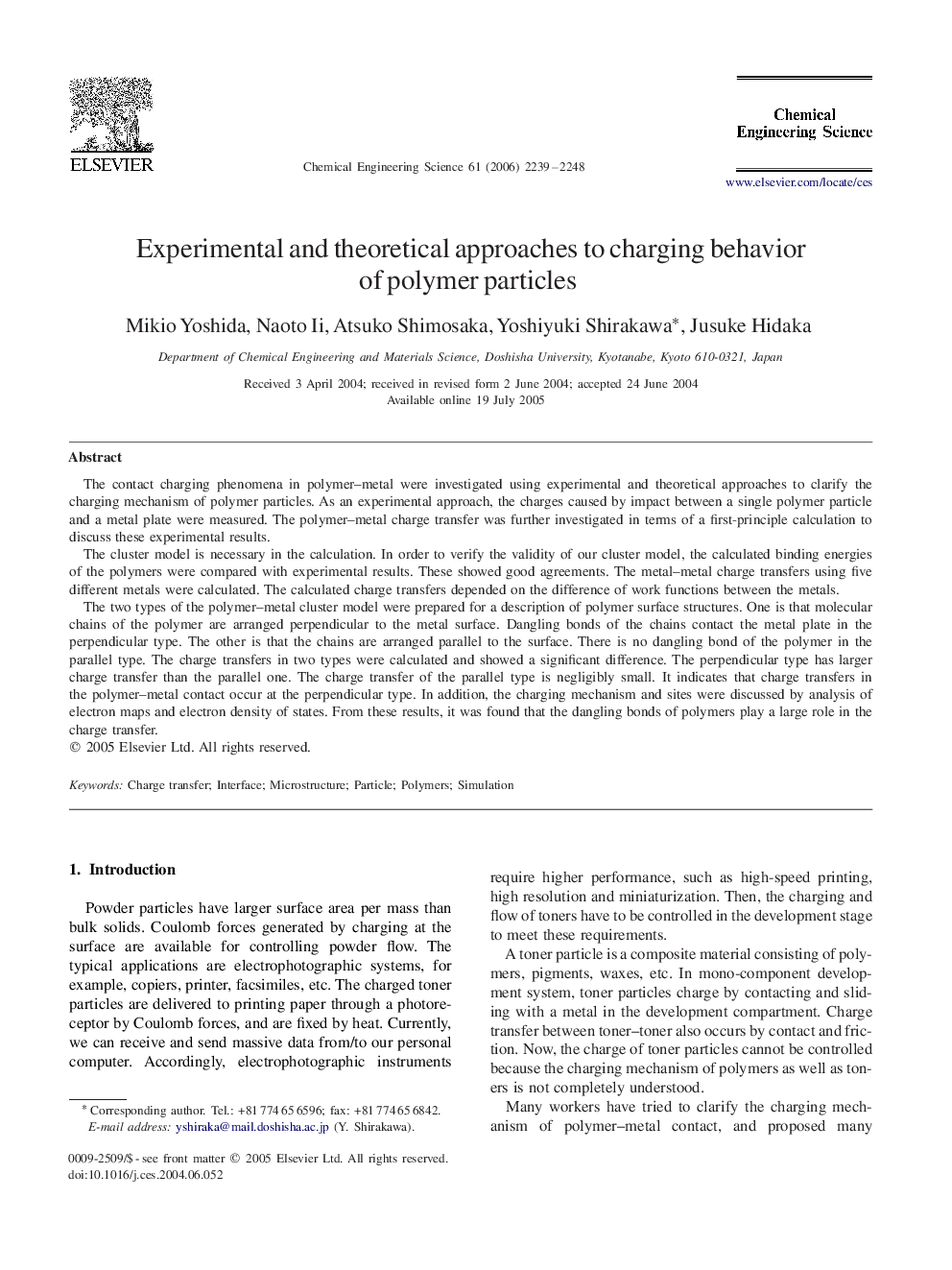| Article ID | Journal | Published Year | Pages | File Type |
|---|---|---|---|---|
| 159124 | Chemical Engineering Science | 2006 | 10 Pages |
The contact charging phenomena in polymer–metal were investigated using experimental and theoretical approaches to clarify the charging mechanism of polymer particles. As an experimental approach, the charges caused by impact between a single polymer particle and a metal plate were measured. The polymer–metal charge transfer was further investigated in terms of a first-principle calculation to discuss these experimental results.The cluster model is necessary in the calculation. In order to verify the validity of our cluster model, the calculated binding energies of the polymers were compared with experimental results. These showed good agreements. The metal–metal charge transfers using five different metals were calculated. The calculated charge transfers depended on the difference of work functions between the metals.The two types of the polymer–metal cluster model were prepared for a description of polymer surface structures. One is that molecular chains of the polymer are arranged perpendicular to the metal surface. Dangling bonds of the chains contact the metal plate in the perpendicular type. The other is that the chains are arranged parallel to the surface. There is no dangling bond of the polymer in the parallel type. The charge transfers in two types were calculated and showed a significant difference. The perpendicular type has larger charge transfer than the parallel one. The charge transfer of the parallel type is negligibly small. It indicates that charge transfers in the polymer–metal contact occur at the perpendicular type. In addition, the charging mechanism and sites were discussed by analysis of electron maps and electron density of states. From these results, it was found that the dangling bonds of polymers play a large role in the charge transfer.
